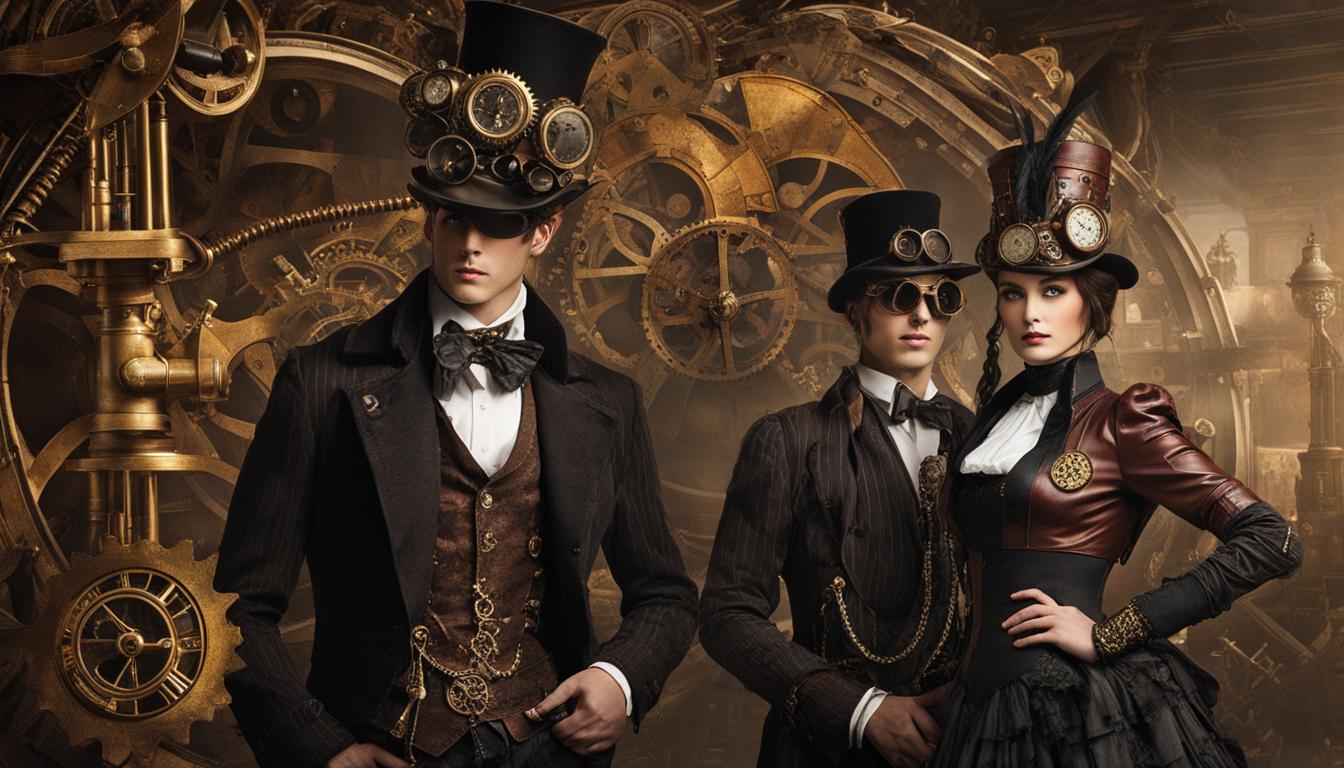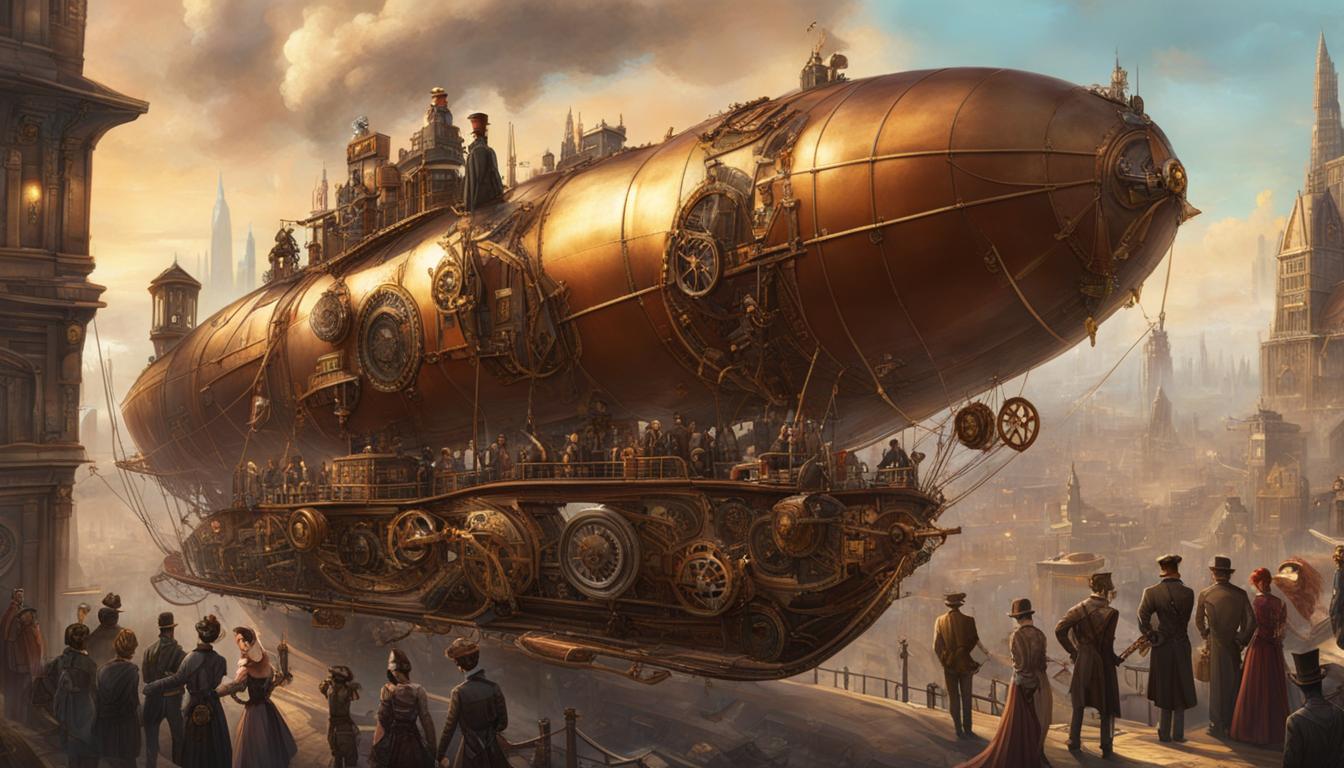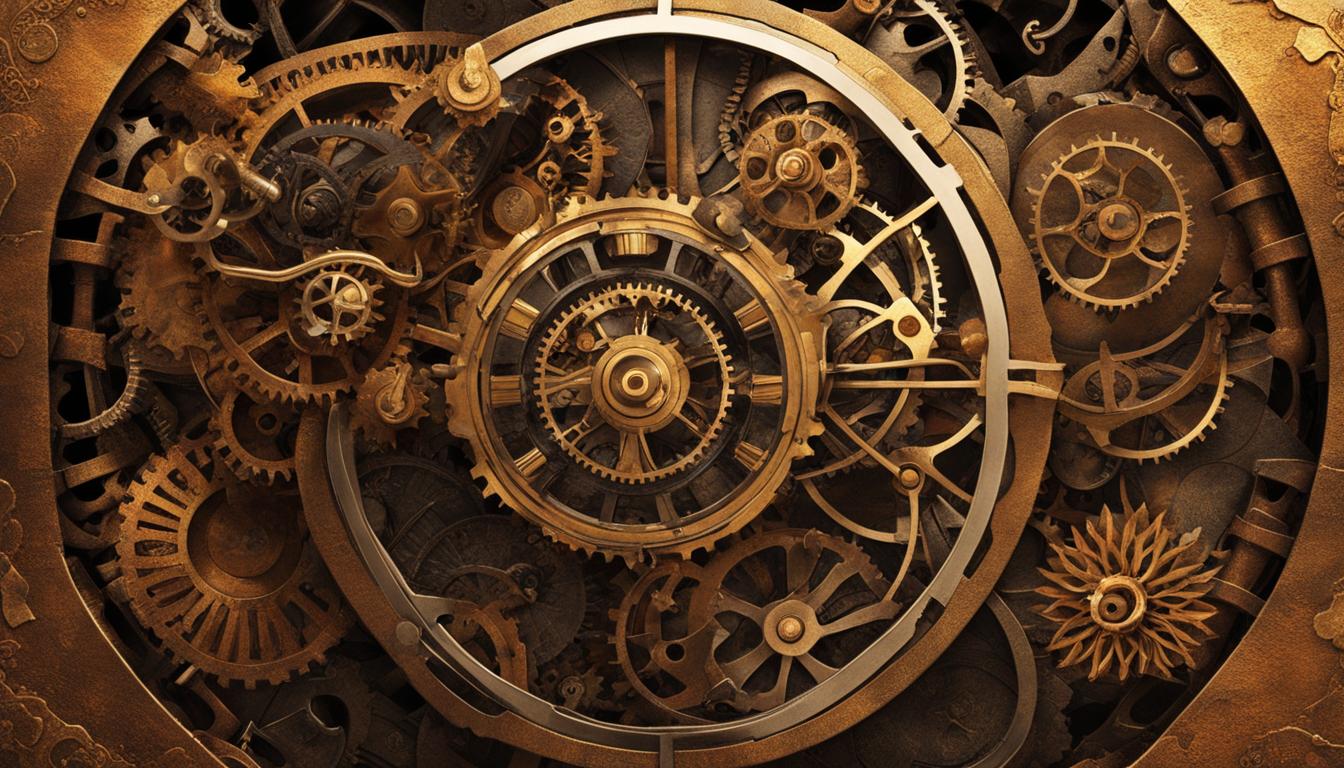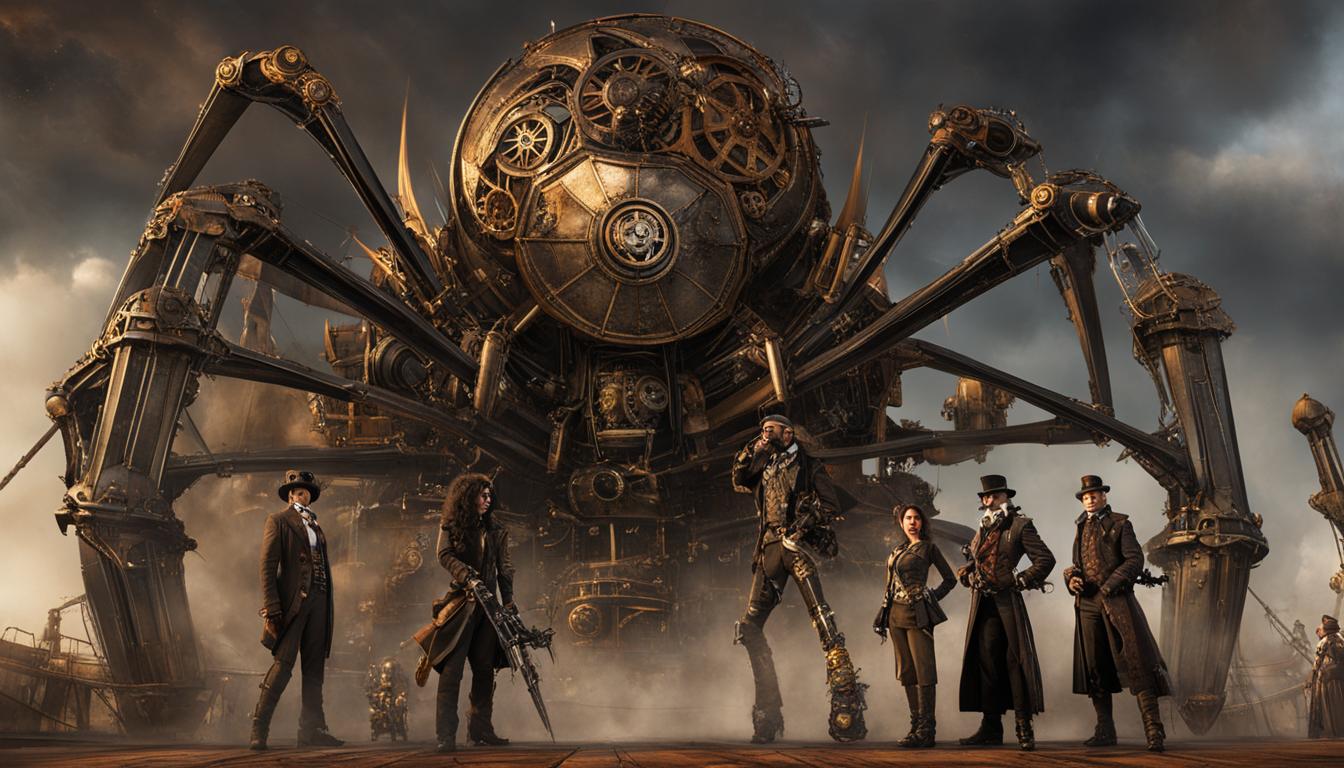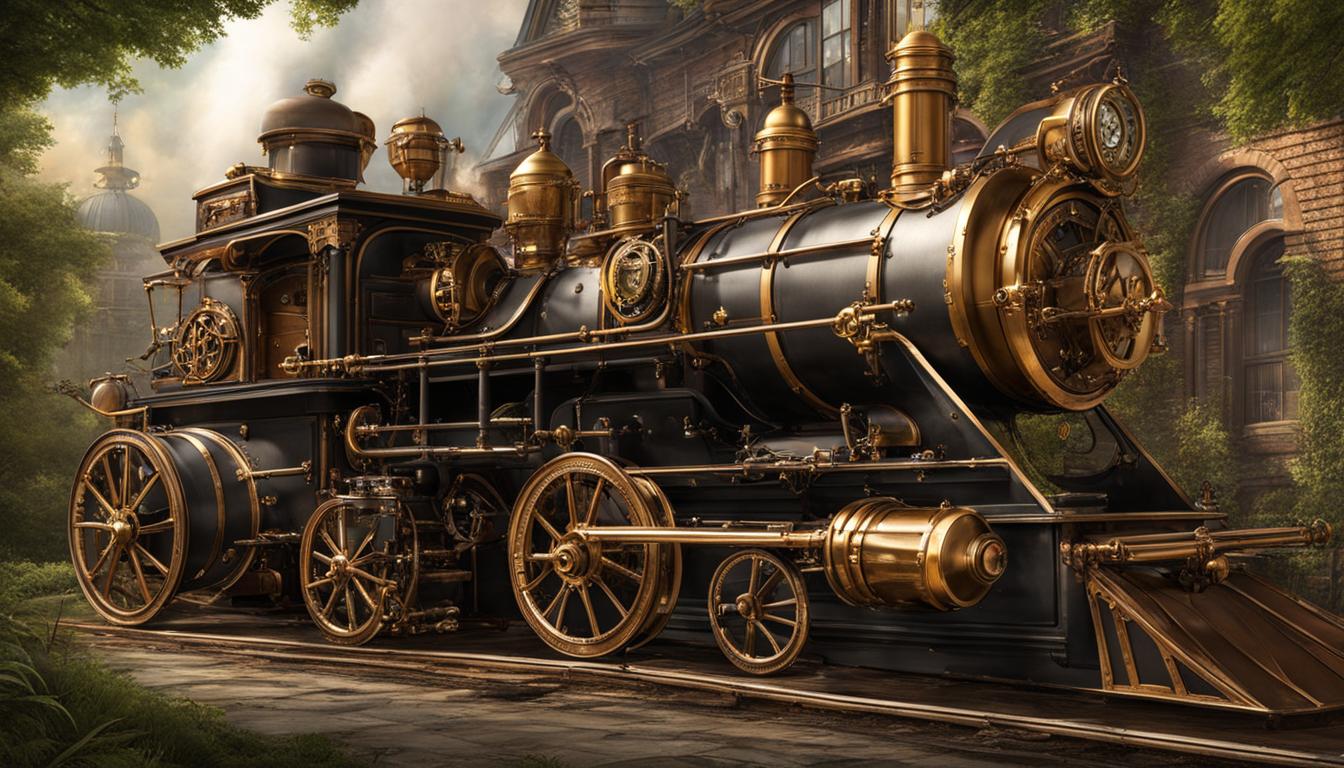Steampunk, a captivating subgenre of science fiction, has undergone a remarkable evolution over the years. Blending retrofuturistic technology with Victorian-era or Wild West settings, steampunk has grown from its humble beginnings into a cultural phenomenon. From its inception in the 19th century to its modern-day presence in popular culture, the steampunk movement has left an indelible mark on the literary and artistic landscape.
Steampunk’s growth over time has been fueled by a series of milestones and influential works that have shaped the genre. From the early literary works of Jules Verne and H.G. Wells to the modern-day adaptations in films and video games, the evolution of steampunk has been a fascinating journey filled with innovation and creativity.
Key Takeaways:
- Steampunk is a subgenre of science fiction that combines retrofuturistic technology with Victorian-era or Wild West settings.
- The term “steampunk” was coined in 1987, but works dating back to the 1950s or earlier can be retroactively classified as steampunk.
- Steampunk draws inspiration from authors like Jules Verne and H.G. Wells, as well as the aesthetics of the Victorian Era.
- The steampunk aesthetic is characterized by a blend of Victorian-era fashion and futuristic technology.
- Steampunk has made significant contributions to popular culture, with its presence in films, TV shows, and video games.
Steampunk: A Journey Through Time and Imagination
Steampunk, a genre that has captivated the imaginations of many, has undergone a fascinating transformation over the years. Understanding the key phases in steampunk history is essential to grasping the development stages of this unique genre. From its origins in the literary works of Jules Verne and H.G. Wells to its modern-day manifestations in popular media, steampunk has truly evolved into a world of its own.
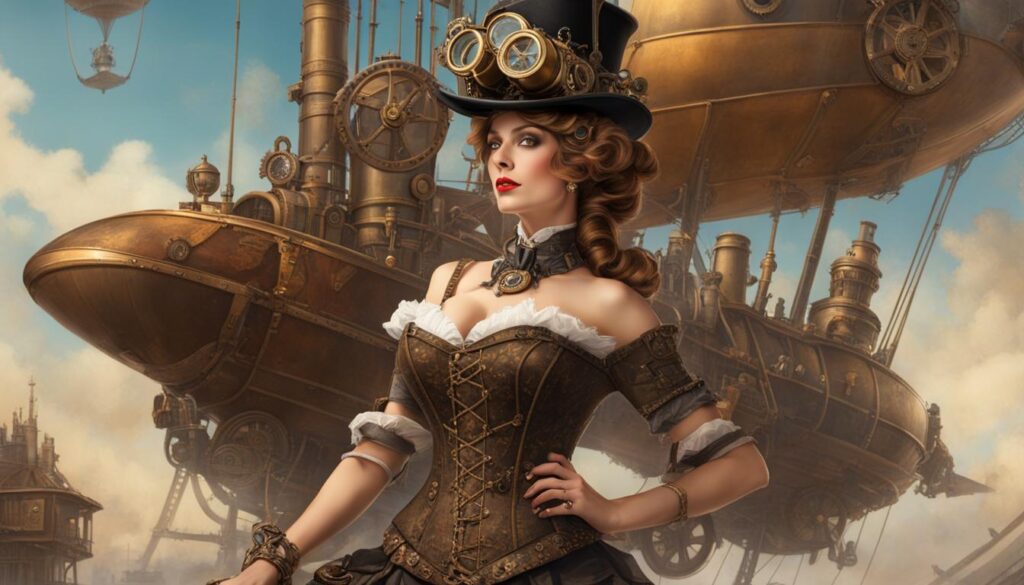
Steampunk in Popular Culture
Steampunk, with its unique blend of retrofuturistic technology and Victorian aesthetics, has made a significant impact on popular culture throughout the decades. This genre, rooted in the works of authors like Jules Verne and H.G. Wells, has inspired numerous films, TV shows, and video games. From classic literature adaptations to original creations, steampunk has captured the imaginations of audiences worldwide.
One notable example of steampunk in popular culture is Jules Verne’s “20,000 Leagues Under the Sea,” which has been adapted into multiple films and continues to be a source of inspiration for current steampunk works. Another influential work is Alan Moore’s “The League of Extraordinary Gentlemen,” a graphic novel series that brings together iconic literary characters in a steampunk setting.
The steampunk aesthetic has found its way into movies such as the “Sherlock Holmes” series, which showcases a Victorian London infused with fantastical steam-powered gadgets. In the realm of video games, “BioShock Infinite” incorporates steampunk elements into its alternate history storyline, creating a visually stunning and immersive experience. These examples illustrate how steampunk has evolved and remained relevant in the world of entertainment, captivating both longtime fans and newcomers.
| Steampunk Works in Popular Culture | Year Released |
|---|---|
| Jules Verne’s “20,000 Leagues Under the Sea” | 1870 |
| Alan Moore’s “The League of Extraordinary Gentlemen” | 1999 |
| “Sherlock Holmes” film series | 2009-2011 |
| “BioShock Infinite” video game | 2013 |
Steampunk Trends over Time
Steampunk has experienced various trends and shifts in popular culture over the years. From its early beginnings as a niche genre to its current status as a recognizable and influential movement, steampunk has evolved alongside advancements in technology and changes in artistic expression. These trends reflect both the enduring appeal of the genre’s core elements and the creative exploration of new ideas.
Steampunk is not just a genre; it’s a state of mind. It’s about embracing a richly imagined past while envisioning a limitless future.
As technology progresses, steampunk continues to reimagine itself, incorporating new elements and perspectives. From the early works of Jules Verne to the recent wave of manga and anime from Japan, steampunk has proven to be a genre that continually adapts and captivates audiences. It continues to inspire both creators and fans, ensuring that steampunk’s influence on popular culture will endure for years to come.
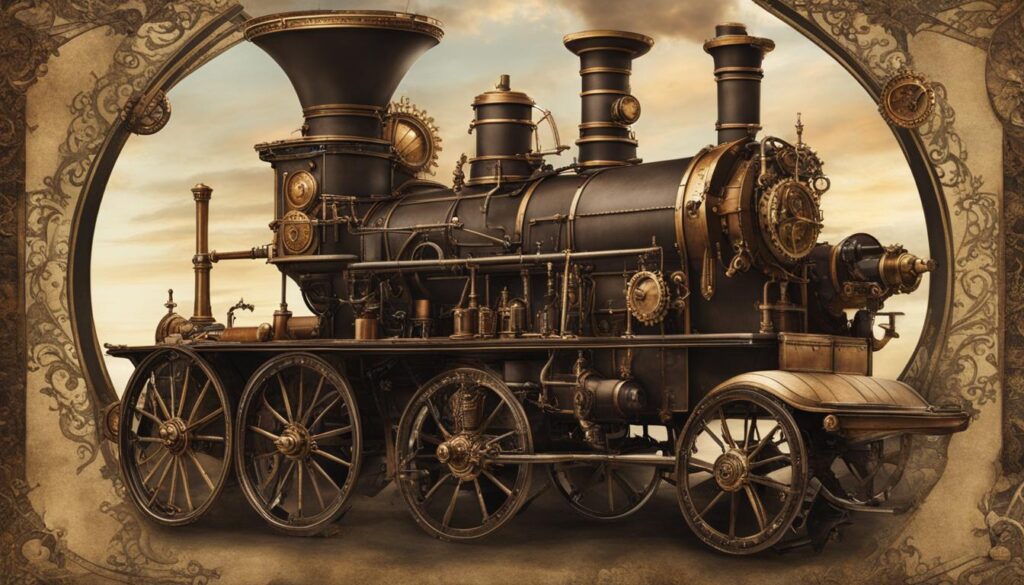
Steampunk in Japanese Culture
Japanese culture has made a significant impact on the steampunk genre, particularly in the realms of manga and anime. Steampunk elements have been present in Japanese manga since the 1940s, with influential works incorporating steampunk aesthetics and themes. Osamu Tezuka’s “Lost World” trilogy, for example, blends Victorian-era technology with adventurous storytelling, while Hayao Miyazaki’s “Nausicaä of the Valley of the Wind” showcases a post-apocalyptic world filled with steampunk-inspired aircraft and machinery.
The influence of Japanese steampunk can also be seen in Miyazaki’s film “Laputa: Castle in the Sky,” which has become a steampunk classic. The movie transports viewers to a fantastical world of floating islands and ancient machinery, combining the fascination with an imaginary, fantastical version of Industrial Europe with influences from 19th-century European authors.
To fully appreciate the impact of Japanese steampunk, it’s important to explore the diverse world of steampunk-themed manga and anime. These visual mediums bring the intricate details and imaginative storytelling of steampunk to life, captivating audiences with their beautifully illustrated panels and engaging narratives.
| Title | Author/Creator | Description |
|---|---|---|
| Akame ga Kill! | Takahiro | A dark fantasy series that combines steampunk elements with action-packed battles and complex characters. |
| Last Exile | Gonzo | A visually stunning anime set in a world where airships and steam-powered technology dominate. |
| Steamboy | Katsuhiro Otomo | An epic steampunk adventure film that delves into the clash between science and progress. |
Japanese steampunk continues to inspire and contribute to the evolution of the genre, pushing the boundaries of what is possible within the realms of technology, fashion, and storytelling. As the genre expands and reaches new audiences, the influence of Japanese culture will undoubtedly play a vital role in shaping its future.
Conclusion
Steampunk has undergone a transformative journey, evolving from its humble beginnings to becoming a genre with a significant impact and influence in popular culture. This unique subgenre of science fiction has captivated audiences with its blend of retrofuturistic technology, Victorian fashion, and alternative history.
From its origins in 19th-century literary works by authors like Jules Verne and H.G. Wells, steampunk has grown into a worldwide phenomenon. It has left its mark on various forms of media, including films, TV shows, video games, and even Japanese manga and anime. Steampunk classics like “20,000 Leagues Under the Sea” and “Laputa: Castle in the Sky” have shaped the genre and inspired countless adaptations.
What sets steampunk apart is its ability to transport audiences to an imaginative world where steam-powered machines, anachronistic technologies, and Victorian fashion collide. This distinctive aesthetic has become iconic and recognizable, capturing the imagination of a dedicated community of enthusiasts known as Steamers.
As steampunk continues to evolve, it is sure to leave a lasting impact on popular culture. Its transformative journey has paved the way for countless works of art and fiction, pushing the boundaries of creativity and imagination. Steampunk’s influence is undeniable, and its presence is here to stay, inspiring future generations of storytellers and creators.
FAQ
What is steampunk?
Steampunk is a subgenre of science fiction that combines retrofuturistic technology and aesthetics with Victorian-era or Wild West settings.
When was the term “steampunk” coined?
The term “steampunk” was coined in 1987 by K.W. Jeter as a playful variation of “cyberpunk.”
What are the influences on steampunk?
Steampunk draws inspiration from the works of authors like Jules Verne and H.G. Wells, as well as alternative history elements.
What is the steampunk aesthetic?
The steampunk aesthetic combines Victorian-era fashion with futuristic technology, often incorporating mechanical elements and gadgets.
How has steampunk influenced popular culture?
Steampunk has become a prominent presence in films, TV shows, and video games, with iconic works like “20,000 Leagues Under the Sea” and “The League of Extraordinary Gentlemen” classified as steampunk.
What is Japanese steampunk?
Japanese steampunk is a subgenre that incorporates steampunk aesthetics and themes into manga and anime, with influential works by Osamu Tezuka and Hayao Miyazaki.
How has steampunk evolved over the years?
Steampunk has grown from a niche interest to a widespread phenomenon, with a dedicated community of enthusiasts and a lasting impact on popular culture.

